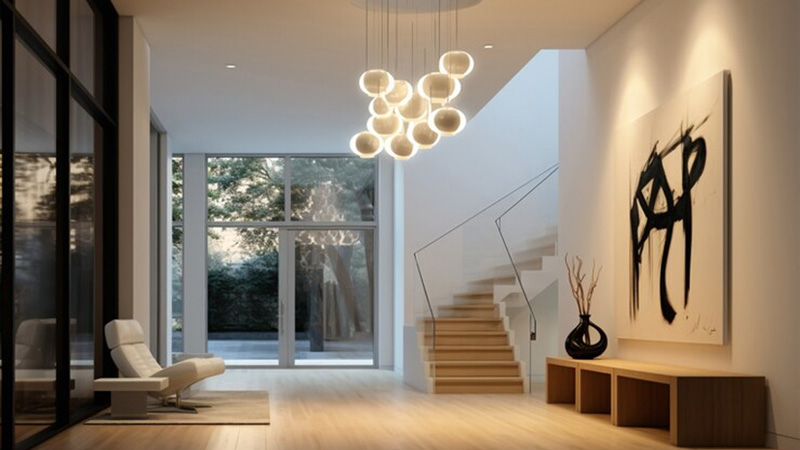LED Lumens to Watts – Complete Introduction 2024
Lumens are important in choosing the perfect display. When it comes to understanding lumens, everything changes. They are the unit of measure for brightness and will determine how vibrant your screen will look. How many lumens does your display need? Learn about the role of lumens in this article.
1. What are Lumens and Watts in LED Displays?
Knowing lumens and watts are the keys to selecting an LED display. Both terms expose how bright the display is. As well as how much energy it will use. Let’s just simplify them.
Lumen is the measure of brightness of something. When considering LED displays, higher lumens will provide a bright screen with plenty of natural light around. You want an LED display with ample lumens so that colors and images remain rich even in daylight.
On the other hand, watts are a measure of energy consumption. They denote the amount of power the display consumes. Since LED displays are efficient. They use lesser watts when the brightness levels are high. Lower wattage means that the display uses less electricity. Hence saving on energy costs.
Knowing both lumens and watts will allow you to choose an LED display that’s bright but not consuming. You will want to balance the high lumens for clarity and low for energy saving. Understanding the basic ideas will ensure that your choice is fully informed. One that affords you good brightness without excessive power usage.
2. Why Lumens Matter for Display Brightness?
Brightness in the case of LED displays is not just about lighting up a screen. It’s also about clarity, sharpness, and visibility. And at the heart of this is one important measurement; lumens.
2.1 Why Lumens Are Key for LED Display Brightness
2.1.1 Visibility in Various Environments
Suppose that you are using a display outside. The sun is shining brightly, and there is reflection all over. If the display does not have enough lumens. It’s going to be dim and washed out. High lumens ensure your screen content will still be visible, clear, and readable in direct sunlight. Indoors, you may not need so many lumens. But in a really bright conference room or inside a mall. You would want a display that has the right brightness.
2.1.2 Contrast and Clarity
Lumens aren’t only making a display visible. They help create contrast. The more brightness, the more colors pop. Details are sharper, and images crisper. When showing off visuals or text, clarity assures viewers will not strain their eyes to see the full experience. Your audience sees what you want them to see, bright, bold, and impactful.
2.1.3 Energy Efficiency
The choice of the right lumen is not really about brightness. It’s more about the power required. Higher lumens, therefore, require more power and can also mean more energy consumption. However, with LED technology. You have energy-efficient brightness. So even if you need high lumens for a brighter display. You can get that with LED options without skyrocketing your energy costs.
2.2 Finding the Right Lumen Level
The right amount of lumens depends on where and how the display is going to be used. For indoors with low lighting, fewer lumens will do. Typically, between 300 to 600 lumens per meter squared. But outdoor or high-light areas will require more. Typically in the range from 2000 to 5000 lumens per meter squared or higher. Think about the environment. Bright sunlight? You’ll need high lumens. A dim conference room? Lower lumens will be just right.
2.3 Why You Care About Lumens
In simple terms, lumens define how well your display will perform in any environment. They govern the brightness that makes your screen visible. The clarity that makes it readable, and the power efficiency that keeps it running cost-effectively.
3. How to Determine the Right Lumen Output for Your Display
3.1 Understand Your Setting
Where you plan on using your projector is key. In fact, different environments call for different brightness levels.
- Home Theatre in a Dark Room: In a dark room, you don’t need a super-bright projector. Lower lumens really work well here. It gives great pleasure in enjoying deep colors and contrasts without hurting your eyes.
- Conference Room or Classroom with Plenty of Light: Brighter spaces, like conference rooms or classrooms, need a projector that will be able to overcome natural or artificial light. High lumens ensure that your display will be easily viewable by all. Even when windows or overhead lights are turned on.
- Outdoors or in Very Bright Spaces: Outdoor projectors need maximum brightness to hold their own in daylight. If you’re going to be projecting outside, or even in partial daylight. You’ll want to go with the highest lumens possible.
3.2 Consider Your Screen Size
The bigger your screen, the more lumens you need. A larger screen spreads light over a bigger area. So extra brightness is necessary to keep the image looking crisp and vibrant. If you’re shooting for over 100 inches, add 500-1,000 lumens to your needs.
3.3 Consider Your Content
Different types of content require different values of nits.
- Movies & TV Shows: The projector for movie nights would target rich colors and contrasts rather than brightness. Medium-lumen projectors-1,500 to 2,500 lumens. Do the job right in a darkened setting, say, in a home theater.
- Presentations & Graphics: In applications targeting presentations or detailed graphics in bright rooms. Clarity is the key. Go for higher lumens of more than 3,000, so that charts, text, and images come into focus.
- Gaming: For a gaming display, vibrant colors and details are pretty important. If you happen to play in a dark room. Then 2,000-3,000 lumens will do the trick. But if you like playing with some light in the room, go higher.
When in doubt, always go with a higher lumen. It is always better to have too much brightness and then adjust it accordingly than have a screen that one struggles to see.
4. The Relationship Between Lumens and Watts in LED Displays
4.1 Watts and Brightness: The Energy Factor
Watts measure the amount of energy your LED display consumes. You could be thinking that the higher the wattage, the brighter the screens. But that isn’t the case with LEDs. Higher wattages have traditionally meant more power. Hence more brightness. But it also meant higher bills for electricity. LEDs changed that completely.
Today, watts really don’t tell you about brightness like they used to. Instead, they describe how much energy your display is consuming. You might look at two displays of similar brightness and notice one is using much less watts. That’s the LED advantage!
4.2 LED Innovation: High Lumens, Low Watts
And that is the cool thing about modern LED technology. It produces more lumens using less wattage. How can that be? LEDs are super-efficient. They waste very little energy as heat and just turn it into light. Hence, they use less power to reach high brightness. That means you receive a bright and vibrant display without the astronomical energy bill.
So next time you go comparing various LED displays. Remember this: if you want brightness, look for lumens. If you want watts, look for energy use. With LEDs, you can have brilliant displays without beating up your eyes or beating down your wallet.
5. How Many Lumens Does Your Display Need?
Those preparing to present in a room will find one factor that outweighs all others: lumens. The term simply defines a measure of brightness for a projector or display. Various amounts can make all the difference in your choice. Too dim and your images are washed out. Too bright and they can hurt eyes.
Let’s proceed with a simple step-by-step guide on how to find out how much lumen you’ll need.
Step 1: Measure Your Display Size
Measure your screen in inches diagonally or width and height. Larger displays will more than likely require higher lumens. Here’s a general idea of what to expect from the amount of brightness you have based on the size of your display :
- Small screens – up to 40 inches – 500 to 1,000 lumens
- Medium screens – 40-80 inches – 1,000 to 2,500 lumens
- Large screens (over 80 inches): 3,000 lumens or more
Step 2: Assess Ambient Lighting
Take a look around your space. Lighting may be one of the biggest helpers in determining how much lumen you need. Consider any specific sources of light, like lamps, windows, or skylights. This may require even more lumens to offset.
Step 3: Screen Type and Material
If you are onto a projector, screen material and color count. High-gain screens-written to reflect light efficiently-requires fewer lumens. On the other hand, white screens may require a higher lumen output for the same brightness.
Step 4: Calculate Lumen Needs
Here’s a rough calculation formula to help give you an idea of what you might need:
Display Lumen Requirement = Screen Area (sq. ft.) × Required Foot-Lamberts
First, calculate the area:
- Multiply your display width and height in feet.
- Estimate your “foot-lamberts” based on lighting:
- Bright room (30-50 foot-lamberts)
- Medium lighting (20-30 foot-lamberts)
- Dark room (10-20 foot-lamberts)
Example: For an 80-inch screen in a medium-lit room:
- 80 inches = roughly 5.5 ft diagonally, 5 × 3 ft (w × h).
- Area = 15 sq. ft.
- DLR = 15 sq. ft. × 30 = 450 lumens minimum.
Step 5: Account for Your Room
If you have control over the light in space. You might just be able to get away with a lower lumen count. But if you can’t avoid light in your space. Then, through big windows or something, always hedge your bets and go higher. It’s all about flexibility.
Key Factors That Affect Lumen Requirements
- Direct sunlight: Highest demand for lumens, generally 3,000+.
- Room size: Larger rooms with high ceilings require higher brightness.
- Distance to screen: The farther a projector is away. The more lumens it must be to achieve the same level of brightness.
- Content type: Text-heavy content requires higher lumens.
Always test your setup! Setup your display in its real-world environment before any big event or meeting and adjust brightness or ambient lighting as necessary. Getting the right lumens isn’t just a math problem. It’s about crafting the best viewing experience.
![]() Front-end Convenient Maintenance
Front-end Convenient Maintenance
![]() Cabinet Size: 640*480mm/3:2 Ratio
Cabinet Size: 640*480mm/3:2 Ratio
![]() Compatible with 320*160mm Module
Compatible with 320*160mm Module
![]() With 3 Years Warranty and 5% Spare Parts
With 3 Years Warranty and 5% Spare Parts
![]() Front Convenient Maintenance
Front Convenient Maintenance
![]() Hard Connection, No Need Cables
Hard Connection, No Need Cables
![]() Can Removable Back Power Supply Box
Can Removable Back Power Supply Box
![]() With 3 Years Warranty and 5% Spare Parts
With 3 Years Warranty and 5% Spare Parts
6. Bottom Line
The right lumens chosen for your LED display transform your viewing experience. It is not about brightness but clarity, comfort, and efficiency. You now know how to match the lumens with your needs. So, is it time to upgrade? Let your space light up intelligently.
Contact
 Building D, Hongfa Science Park,
Building D, Hongfa Science Park,
2035 Songbai Road, Shiyan, Bao’an District, Shenzhen, Guangdong, China.







